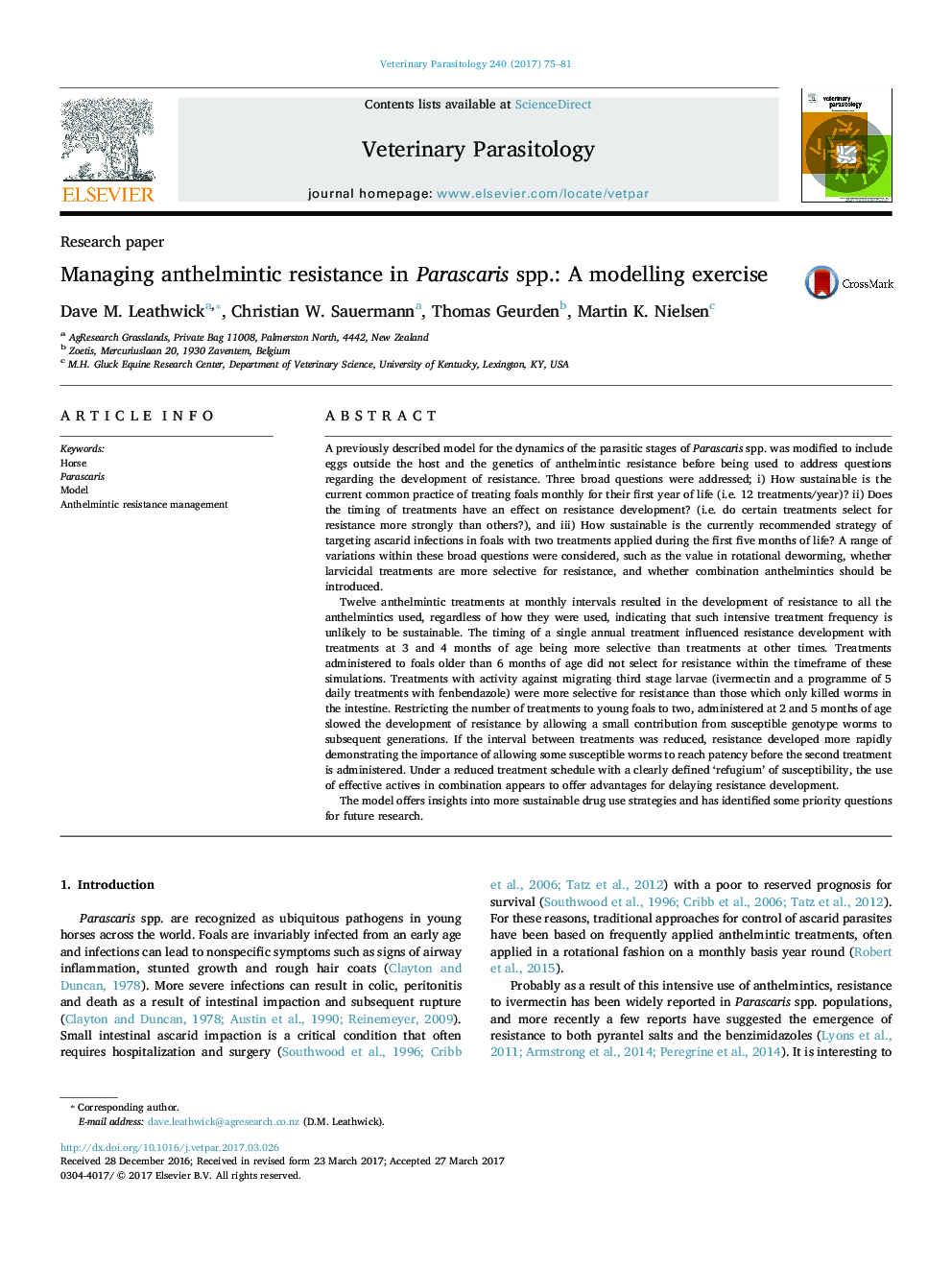| کد مقاله | کد نشریه | سال انتشار | مقاله انگلیسی | نسخه تمام متن |
|---|---|---|---|---|
| 5545723 | 1555636 | 2017 | 7 صفحه PDF | دانلود رایگان |

- A model of Parascaris dynamics is modified to include the genetics of resistance.
- Different treatment strategies are compared.
- Monthly treatment of foals is unsustainable in the long-term.
- Treating foals only twice at age 2 and 5 months slows resistance development.
- Larvicidal treatments are more selective for resistance.
A previously described model for the dynamics of the parasitic stages of Parascaris spp. was modified to include eggs outside the host and the genetics of anthelmintic resistance before being used to address questions regarding the development of resistance. Three broad questions were addressed; i) How sustainable is the current common practice of treating foals monthly for their first year of life (i.e. 12 treatments/year)? ii) Does the timing of treatments have an effect on resistance development? (i.e. do certain treatments select for resistance more strongly than others?), and iii) How sustainable is the currently recommended strategy of targeting ascarid infections in foals with two treatments applied during the first five months of life? A range of variations within these broad questions were considered, such as the value in rotational deworming, whether larvicidal treatments are more selective for resistance, and whether combination anthelmintics should be introduced.Twelve anthelmintic treatments at monthly intervals resulted in the development of resistance to all the anthelmintics used, regardless of how they were used, indicating that such intensive treatment frequency is unlikely to be sustainable. The timing of a single annual treatment influenced resistance development with treatments at 3 and 4 months of age being more selective than treatments at other times. Treatments administered to foals older than 6 months of age did not select for resistance within the timeframe of these simulations. Treatments with activity against migrating third stage larvae (ivermectin and a programme of 5 daily treatments with fenbendazole) were more selective for resistance than those which only killed worms in the intestine. Restricting the number of treatments to young foals to two, administered at 2 and 5 months of age slowed the development of resistance by allowing a small contribution from susceptible genotype worms to subsequent generations. If the interval between treatments was reduced, resistance developed more rapidly demonstrating the importance of allowing some susceptible worms to reach patency before the second treatment is administered. Under a reduced treatment schedule with a clearly defined 'refugium' of susceptibility, the use of effective actives in combination appears to offer advantages for delaying resistance development.The model offers insights into more sustainable drug use strategies and has identified some priority questions for future research.
Journal: Veterinary Parasitology - Volume 240, 15 June 2017, Pages 75-81